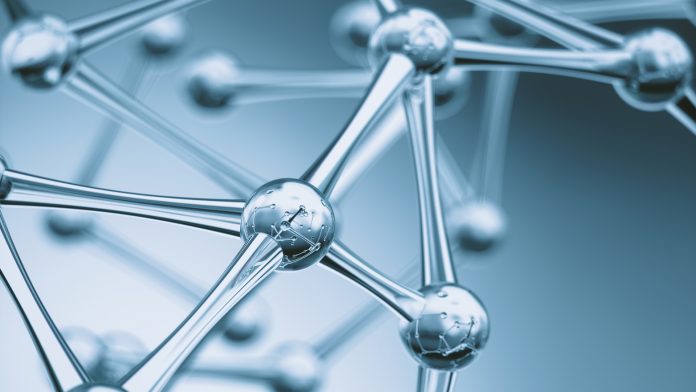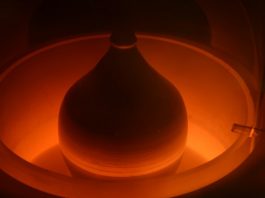Osaka Metropolitan University scientists have discovered an unprecedented quantum phase transition, during which crystals achieve amorphous characteristics while retaining their crystalline properties.
Common examples of phase transitions include water freezing to ice and water boiling. These findings contribute to developing hybrid materials for use in harsh environments, such as outer space.
The study was published in the scientific journal Physical Review B.
A disordered atomic arrangement
A typical quantum phase transition exhibited by crystalline solids involves a change in the crystal structure. Such structural phase transitions usually occur at finite temperatures.
However, controlling the chemical composition of the crystal can lower the transition temperature to absolute zero (−273°C). The transition point at absolute zero is called the structural quantum critical point.
In the dielectric compound Ba1-xSrxAl2O4, the structural phase transition is driven by an acoustic soft mode, the atomic vibration pattern of which is similar to that of sound waves. The compound comprises an AlO4 tetrahedral network and Ba/Sr atoms.
The research team, led by Associate Professor Yui Ishii from the Graduate School of Engineering at Osaka Metropolitan University, has discovered that the atomic arrangement formed in the AlO4 network is highly disordered. Formed in chemical compositions near the structural quantum critical point, this disordered arrangement results in characteristics of both crystalline and amorphous materials.
Creating a new hybrid state
Ba1-xSrxAl2O4 is a crystalline solid; however, the researchers found that at higher Sr concentrations than the structural quantum critical point, Ba1-xSrxAl2O4 exhibits the thermal characteristic of amorphous materials. These characteristics include low thermal conductivity when compared to glass materials, such as silica glass.
They observed that a part of the atomic structure loses periodicity because of the incoherently stopped acoustic soft mode. As a result, a new quantum phase is formed, consisting of a glassy Al-O network and a periodic Ba arrangement.
This hybrid state, which the research team was the first to discover, can be created simply by mixing raw materials uniformly and heating them.
Professor Ishii concluded: “In principle, the phenomenon revealed in this research can occur in materials exhibiting acoustic soft modes. Applying this technique to various materials will possibly help us create hybrid materials that combine the physical properties of crystals, such as optical properties and electrical conductivity, with the low thermal conductivity of amorphous materials.
“In addition, the high heat resistance of crystals can be utilised to develop insulation materials that can be used in harsh environments, such as outer space.”









